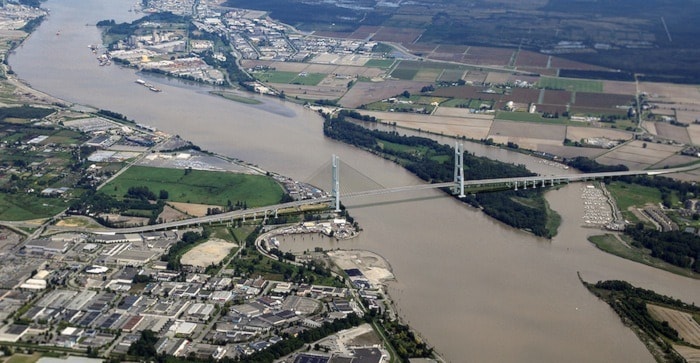The provincial point man in charge of replacing the Massey Tunnel with a new bridge is rejecting criticism that the megaproject will merely shift the Highway 99 traffic jam north to the Oak Street and Knight Street bridges.
Geoff Freer, executive director of the Gateway Program, said traffic data gathered so far shows most of the northbound tunnel traffic doesn't enter Vancouver – 60 per cent of motorists using it go between Richmond, Surrey, Delta, the U.S. border or the BC Ferries terminal in Tsawwassen.
In the past, he said, replacement of the tunnel with a higher capacity crossing was ruled out on the basis it would just move the bottleneck.
But traffic patterns have changed greatly, Freer said in an interview following the premier's Sept. 22 announcement of the new bridge.
"I was surprised," he said of the findings, but added it reflects strong economic growth in the three cities.
Another key change is the Canada Line, which opened in 2010 and now draws many Vancouver-bound commuters through the tube to Bridgeport Station in Richmond who previously drove over the Oak Street Bridge.
Freer said TransLink counts show 50 per cent of all people travelling through the tunnel in the morning rush hour do so aboard buses.
That reflects the ability of buses to speed past congested rush hour traffic using bus-only lanes and queue jumpers – which he said are working well.
Even the day-long average mode share of trips taken by transit through the tunnel is strong at 26 per cent, he said.
Adding to the numbers are BC Ferry passengers who increasingly walk on and ride a bus from Tsawwassen.
Critics have warned the new bridge could set back transit, making it easier to drive instead, while sucking away billions of dollars that could otherwise build new SkyTrain or light rail lines.
But Freer argued it will improve transit by giving buses dedicated transit lanes so they no longer merge with regular traffic to enter the tunnel.
The project would also be designed for future rapid transit, although there's no timeline or plan for adding it.
"There are an awful lot of people who can never use transit for various reasons," Freer said, listing trades people, goods movers and others making multiple stops.
He confirmed the project could cost on the order of $3 billion, in line with the Port Mann/Highway 1 Project, but it's too early to narrow that down.
As for whether the new bridge would be tolled like the Port Mann, Freer said more work is required to decide that.
Adding tolls would affect use of the bridge – Freer confirmed that will have to be explored as part of detailed traffic modeling – but he said that won't happen before next spring.
Engineers will consider upgrades along the length of Highway 99 right from the U.S. border to Bridgeport Road in Richmond.
Freer doesn't anticipate the addition of more highway lanes, but rather interchange upgrades and lengthening on-ramps for safer merging.
The biggest changes would be to the interchanges on either side of the tunnel.
A provincial government video (view below) depicted the bridge as having 10 lanes, but Freer said more work is needed to decide the number of lanes.
He predicted there will be "very little impact if any" on agricultural land and Metro Vancouver's Deas Island Regional Park, where bridge piers would be placed, could actually grow in size because of the removal of the tunnel approach.
He said the tunnel is the region's worst pinch point because it's the only one where rush hour traffic is cut to a single lane in the off-peak direction for hours at a time.
The old tunnel would be removed to allow larger ships passage upriver.
Freer said keeping it makes no sense.
It would cost "millions" to rehabilitate beyond its current 10-year useful lifespan, he said, and it will never meet modern standards for lane widths, emergency responder access or earthquake protection.
See related story: Mayors aim to tie new bridge to tolls, referendum
